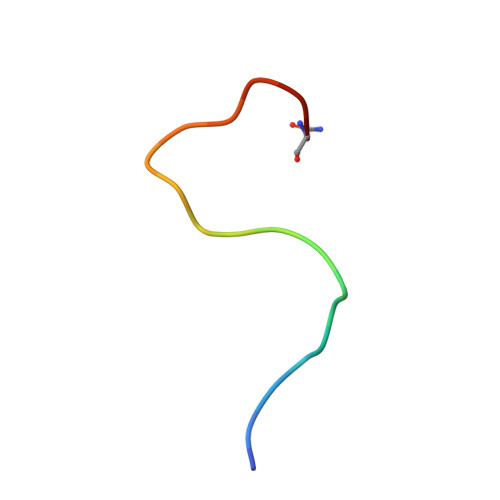Structure and dynamics of G protein-coupled receptor-bound ghrelin reveal the critical role of the octanoyl chain.
Ferre, G., Louet, M., Saurel, O., Delort, B., Czaplicki, G., M'Kadmi, C., Damian, M., Renault, P., Cantel, S., Gavara, L., Demange, P., Marie, J., Fehrentz, J.A., Floquet, N., Milon, A., Baneres, J.L.(2019) Proc Natl Acad Sci U S A 116: 17525-17530
- PubMed: 31416915
- DOI: https://doi.org/10.1073/pnas.1905105116
- Primary Citation of Related Structures:
6H3E - PubMed Abstract:
Ghrelin plays a central role in controlling major biological processes. As for other G protein-coupled receptor (GPCR) peptide agonists, the structure and dynamics of ghrelin bound to its receptor remain obscure. Using a combination of solution-state NMR and molecular modeling, we demonstrate that binding to the growth hormone secretagogue receptor is accompanied by a conformational change in ghrelin that structures its central region, involving the formation of a well-defined hydrophobic core. By comparing its acylated and nonacylated forms, we conclude that the ghrelin octanoyl chain is essential to form the hydrophobic core and promote access of ghrelin to the receptor ligand-binding pocket. The combination of coarse-grained molecular dynamics studies and NMR should prove useful in improving our mechanistic understanding of the complex conformational space explored by a natural peptide agonist when binding to its GPCR. Such information should also facilitate the design of new ghrelin receptor-selective drugs.
- Institut de Pharmacologie et Biologie Structurale, Université de Toulouse, CNRS, Université Paul Sabatier, 31000 Toulouse, France.
Organizational Affiliation:

















